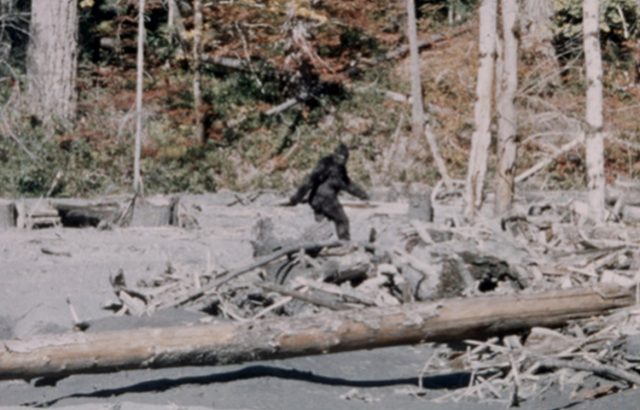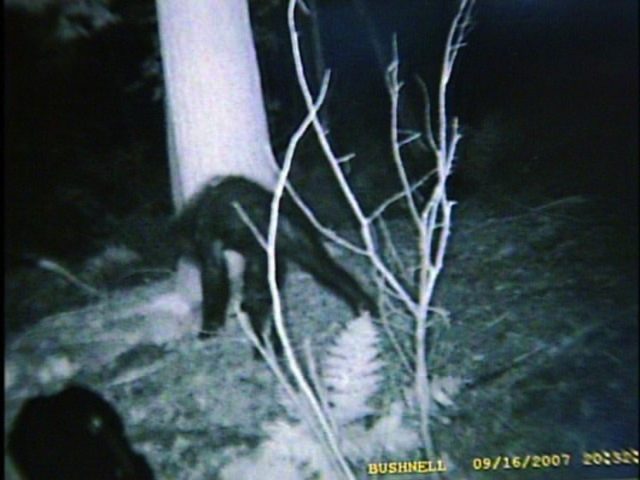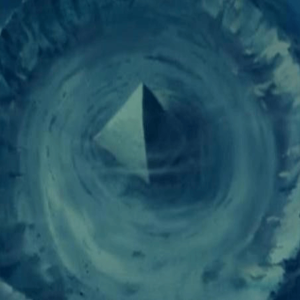Bigfoot: prehistoric animal or legendary hoax?


Bigfoot: prehistoric animal or legendary hoax?
We all, in some way, know the legend of Bigfoot, a mythological ape that supposedly inhabits the forests of the northern United States.
However, as we will see later, many cultures have their own legend around Bigfoot, calling this mysterious hominid by different names.
Thus, around this legendary demi-human, many myths have developed, ranging from scary stories of beasts that steal children while they sleep, to solitary animals that hide in the forests avoiding the modern world at all costs.
Along the same lines, there are many sightings of Bigfoot that have been recorded, although most end up being denied. Let’s see what’s behind the story of this legendary animal.
This is how the legend of Bigfoot originated

Stories about a large furry creature, half human and half primate, have been around in different cultures around the world for a long time in history.
In the Himalayas it is called The Yeti, in Canada, Sasquatch and, in the North of the United States, it is known as Bigfoot or Bigfoot.
In fact, the only continent where there are no similar legends is Antarctica.
All these stories have as a common denominator the existence of a creature between six and eight feet tall, with a broad forehead and a face similar to a caveman, completely covered in hair and endowed with feet so enormous that, according to estimates, they have a measure of two feet long by eight feet wide, giving it its characteristic name.
The origin of this legend can be traced back to the ancient Native American civilizations of the Pacific Northwest, even long before colonization.
Thus, the versions of the legend surrounding Bigfoot varied widely among the different tribes; in fact, they even included variations from family to family.
In this sense, the stories ranged from fables about a huge cannibalistic creature that lived in the mountains, to the existence of harmless giants that fed by stealing fish from fishermen’s nets.
For the year 1920, JW Burns dedicated himself to compiling all the versions of this legend, from which he prepared a report for a Canadian newspaper; from that moment, the term Sasquatch was coined to refer to the mysterious creature.
Later, in 1958, the story of Bigfoot would begin to consolidate in American territory.
Around that time, a man named Gerald Crew claimed to have found huge footprints in California at a construction site where he worked.
Upon making this supposed discovery, he had a friend make plaster casts for evidence to back up his story, gaining much attention after it was published in the Humboldt Times newspaper.
The story was even spread by the Associated Press, which earned him international recognition.
However, after the death of Ray Wallace, the brother of the manager of the construction site where the footprints were supposedly found, it was discovered that everything had been a hoax, as his family took it upon himself to say that he was the one who had falsified the footprints. .

There are many giant footprints that have been found around the world. These were found in 2016, in China.
Furthermore, Scoop Beal, editor of the Humboldt Times newspaper, is believed to have been in on the hoax.
However, the idea had already been planted in people’s minds, popularizing the legend in such a way that the first Bigfoot hunters would quickly form.
Along the same lines, during 1967, one of Bigfoot’s most famous videos was released, which, as we will see below, would serve many people to consolidate their confidence in the existence of this mythical ape-man.
Most of the famous Bigfoot sightings have turned out to be hoaxes.
The first sightings of Bigfoot date from the year 1850, based on records of encounters by hunters with huge beasts that moved on their two hind legs.
Also, in the 19th century, legends such as the “Wild Man of Raven Canyon” and “The Savage of Winsted” became popular, which revolve around the existence of huge hairy creatures similar to a man, but not they were human.
Thus, in 1924, a Canadian businessman reported having been kidnapped by Sasquatch, while, around the same time, a group of miners from the state of Washington claimed to have been attacked by a wild man, whose features match those of Pie Big.
However, the most famous records of Bigfoot date back half a century or less. One of them is the discovery of the traces of this creature, previously exposed.
Even so, the most famous sighting of Bigfoot was recorded by a video filmed in 1967 by Roger Patterson and Robert Grimlin, in California, where a huge creature can be seen striding through the forest.
In fact, to validate this test, these characters had the tape examined by special effects experts from Universal Studios in Hollywood, who allegedly said that it was possible to recreate a similar scene if a system that mimicked the effect was developed. movement of the muscles artificially and an actor was trained to walk in this way, which would be practically impossible.
However, a few years later, in 1999, the video was emphatically denied, as Bob Heironimus, a friend of Patterson, claimed that he was the one who had dressed up as Bigfoot for the recording of the tape, which would mean that everything it had been a hoax.
More recently, in 2008, Rick Dyer and Matthew Whitton claimed to have unveiled the mystery after assuring that they had found a Bigfoot body, after which they posted a video on YouTube.
Specifically, the body was almost eight feet tall and weighed over 500 pounds; Thus, this discovery was broadcast by well-known news channels, including CNN, Fox and BBC News, among others, earning this duo more than $50,000.
However, when the body was analyzed, it was discovered that it was nothing more than a model made up of foam rubber and fake hair, so, as in the previous stories, this discovery would be just another hoax about the legend.
What is true behind the legend of Bigfoot?
 The closest thing to Bigfoot is Gigantopithecus, a primate that went extinct approximately 300,000 years ago.
The closest thing to Bigfoot is Gigantopithecus, a primate that went extinct approximately 300,000 years ago.
As we see, most Bigfoot sightings end up being hoaxed by people who either have nothing else to do, or want to gain public notoriety.
In fact, there is quite a thriving market around products that allow you to recreate footprints and dress up as Bigfoot to fool people, perpetuating the legend.
Additionally, some sightings end up being misidentified animals. For example, in 2007 there was a stir around a photo captured by an auto-triggered camera that had been placed in a tree in a Pennsylvania forest.
 This is the photo in which Bigfoot can supposedly be seen.
This is the photo in which Bigfoot can supposedly be seen.
Thus, many people are convinced that this blurry photo, where a huge fur-covered four-legged creature can be seen, is the definitive proof of Bigfoot’s existence.
However, Pennsylvania authorities and institutions claim that this creature is nothing more than a bear that probably has an extreme case of mange; although it is not ruled out that it is a person in disguise.
Regarding this issue, scientists have not remained silent, assuring that the Yeti, Sasquatch, Bigfoot, or whatever you want to call it, does not exist, at least currently.
In this sense, there are records that, more than a million years ago in history, there was a primate the size of a polar bear that lived in South Asia until the time of its extinction, approximately 300,000 years ago. .
In fact, there have been records of Gigantopithecus, the scientific name for this huge ape, since 1935 when Ralph von Koenigswald, a paleoanthropologist from Germany, entered a pharmacy in Hong Kong, where he was surprised to discover a huge primate tooth for sale. .
Since then, scientists have collected hundreds of samples of Gigantopithecus teeth, as well as several jaws, in various South Asian countries, including China and India.
Based on these bone records, analyzes have been carried out indicating that Gigantopithecus was closely related to the orangutans we know today and to another species of prehistoric ape, called Sivapithecus, an Asian primate that lived between 8 and 12 million years ago. of years.
While it is not possible to accurately reconstruct this creature from dental samples alone, this ape is believed to have been similar to modern gorillas, estimated to be over 10 feet tall with a weight of 1,200 pounds.
Therefore, considering their complexion, everything seems to indicate that these primates lived on the ground, walking on their fists, just like orangutans do.
However, the researchers say that due to various factors, such as climate changes that occurred some 800,000 years ago, as well as excessive hunting by Homo Erectus and its slow development process, which affected its reproductive capacity, Gigantopithecus became became extinct for good about 300,000 years ago.
Therefore, as we see, the idea of Bigfoot’s existence is not convincing, but this has not prevented his legend from spreading widely, becoming part of popular culture.
Finally, taking this into account, it is possible to conclude that, until there is real evidence of its existence, it is impossible to affirm that Bigfoot is nothing more than a myth, as is the case with many other creatures within the world of cryptozoology.




